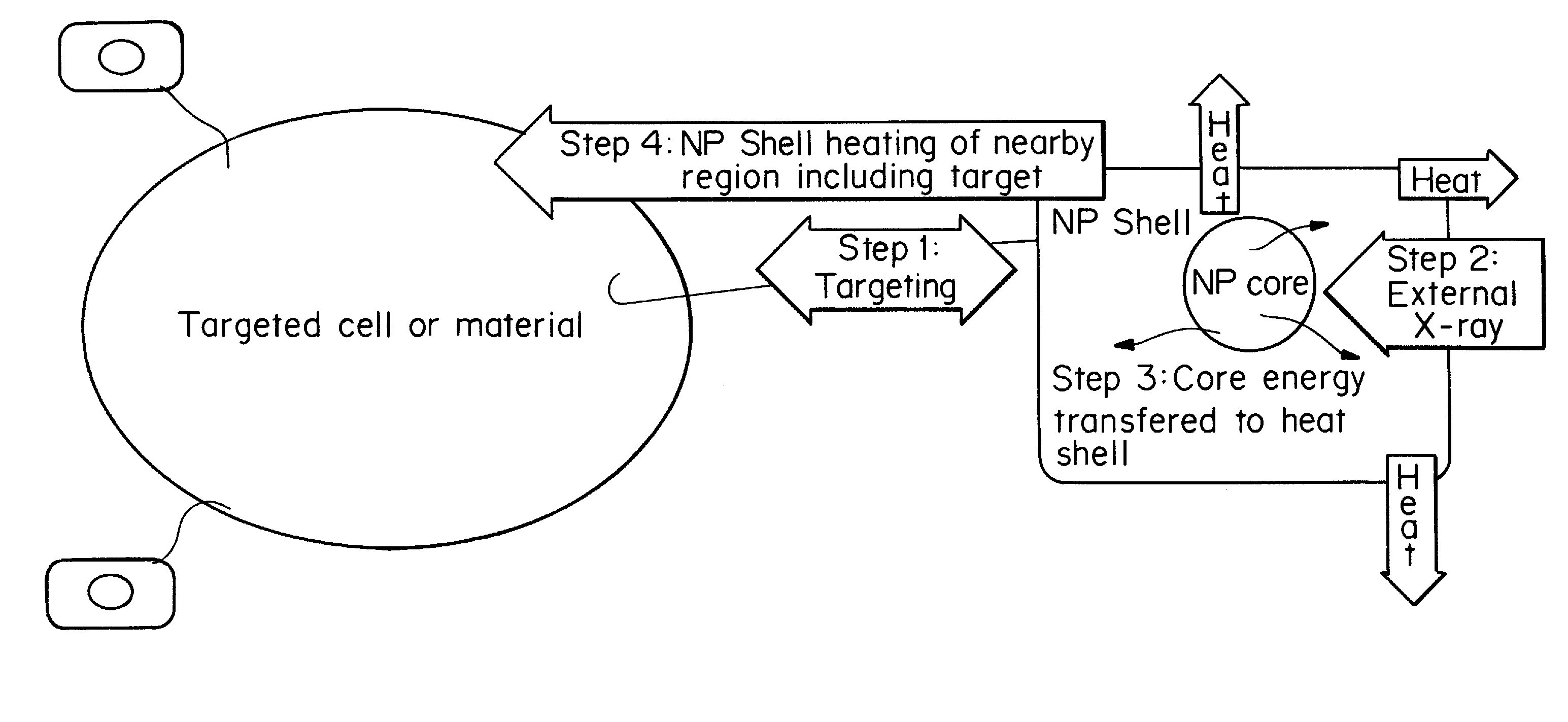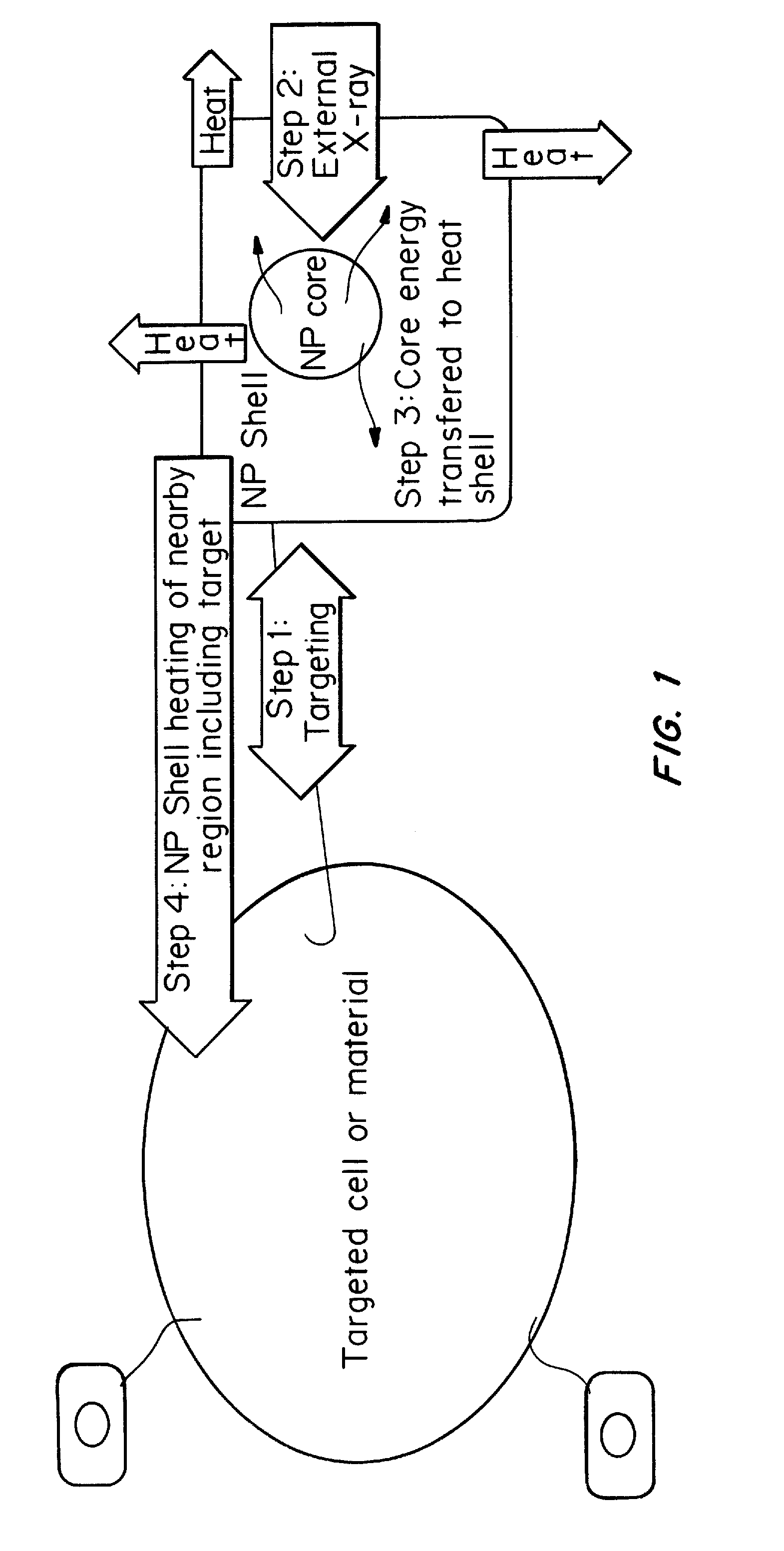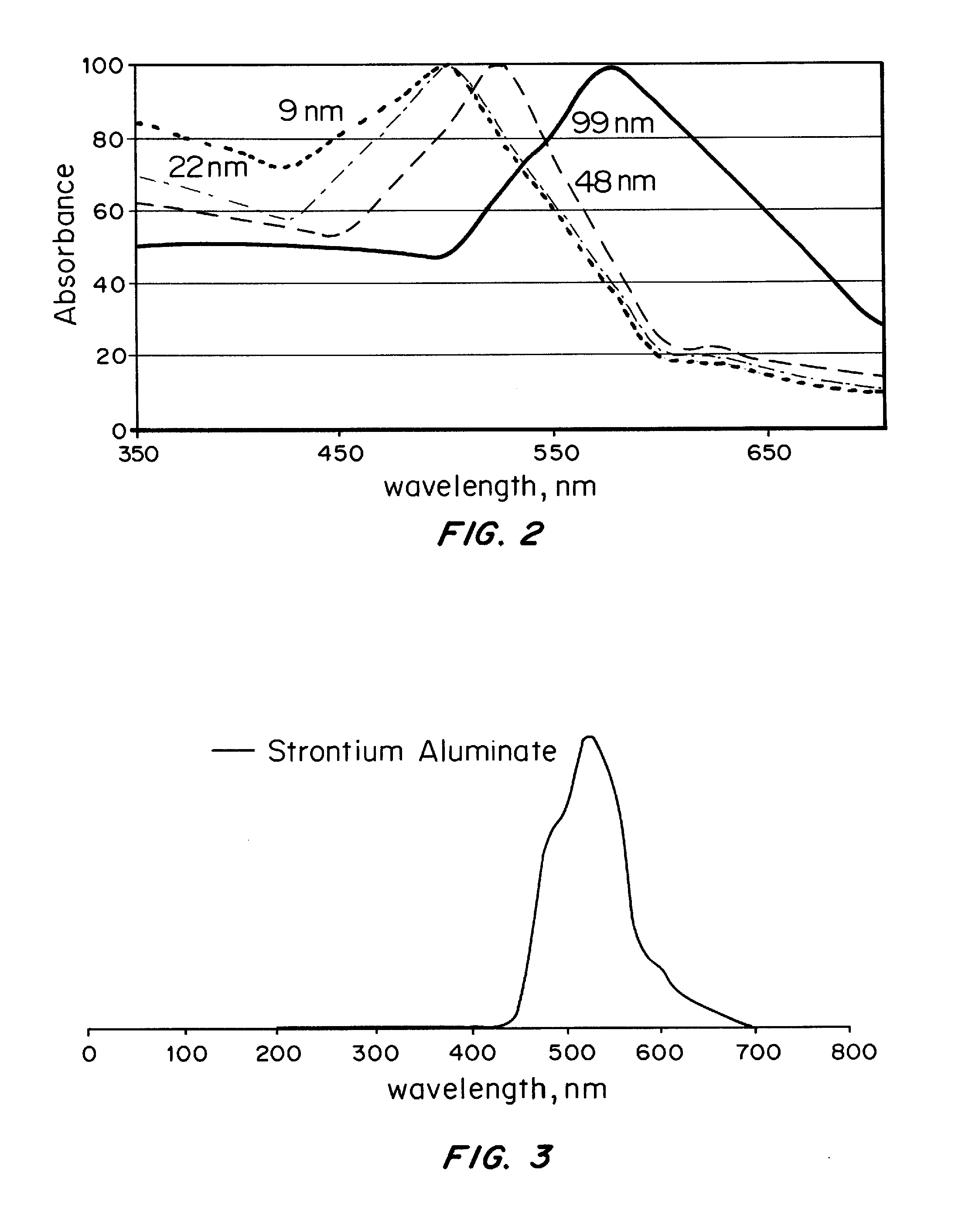Core-excited nanoparticles and methods of their use in the diagnosis and treatment of disease
- Summary
- Abstract
- Description
- Claims
- Application Information
AI Technical Summary
Benefits of technology
Problems solved by technology
Method used
Image
Examples
example 1
Targeting Breast Cancer
[0079]The following CENT treatment approach is based on a core-shell nanoparticle designed on the basis of X-ray excited persistent luminescence and the maximum safe dose of x-ray radiation the patient may tolerate. As a reference point for the therapeutic dosages of x-ray radiation needed, the patient is 180 cm in height and 80 Kg in weight.
[0080]First, nanoparticles of SrAl2O4:Eu:Dy of approximately 60 nm in diameter, prepared by solid state reaction methods, are used as the core in a core-shell nanoparticle material design. The x-ray luminescence spectrum of this material has a maximum at approximately 510 nm, similar to the non-doped SrAl2O4 material, as shown in FIG. 3. A nanoshell of gold is grown over the nanocore material. Gold nanoparticles have the absorbance spectrum typical of that shown in FIGS. 2 and 5; additional Mie theory calculations allow design for maximum spectral overlap (FRET) between core and shell. The nanoparticle is then coated with ...
example 2
Treatment of Colon Cancer
[0082]The following CENT treatment approach is based on a core-shell nanoparticle designed on the basis of X-ray excited persistent luminescence and the maximum safe dose of computed tomography (CT) radiation the patient may tolerate. As a reference point for the therapeutic dosages of x-ray radiation needed, the patient is 180 cm in height and 80 Kg in weight.
[0083]First, nanoparticles of BaFBr:Eu2+,Mn2+ of 20 nm in diameter are prepared as the core material as outlined in Chen and Zhang, 2006. The x-ray luminescence spectrum of this material has a maximum at approximately 400 nm, as shown in FIG. 4(a). A nanoshell of silver then is grown over the nanocore material. Silver nanoparticles have the absorbance spectrum typical of that shown in FIG. 5; additional Mie theory calculations allow design for maximum spectral overlap (FRET) between core and shell. The nanoparticle is then coated with polyethylene glycol (PEG), to which the A33 antibody is attached. Th...
PUM
 Login to View More
Login to View More Abstract
Description
Claims
Application Information
 Login to View More
Login to View More - R&D
- Intellectual Property
- Life Sciences
- Materials
- Tech Scout
- Unparalleled Data Quality
- Higher Quality Content
- 60% Fewer Hallucinations
Browse by: Latest US Patents, China's latest patents, Technical Efficacy Thesaurus, Application Domain, Technology Topic, Popular Technical Reports.
© 2025 PatSnap. All rights reserved.Legal|Privacy policy|Modern Slavery Act Transparency Statement|Sitemap|About US| Contact US: help@patsnap.com



